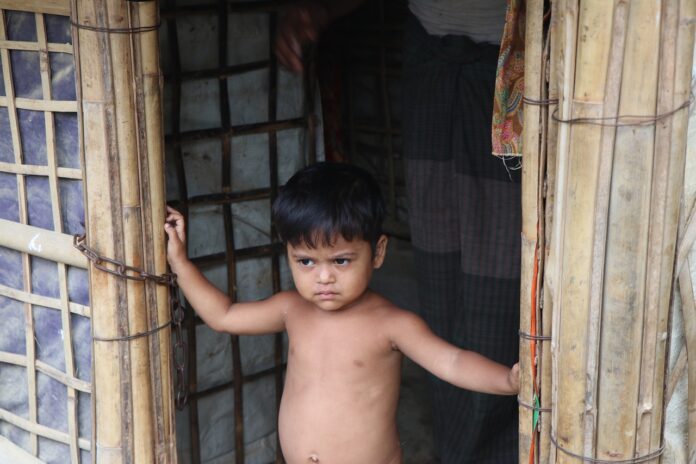By Fatima Azhar
Despite the international communities renewed commitment to resolving refugee crises through promoting equitable burden-sharing with host countries, the conditions of the Rohingyas in Cox’s Bazar have not improved at all. With failed repatriation attempts, limited third-country resettlement offers, and no chances of local integration with the host communities, the fate of one million Rohingyas hangs in balance. The only hope for them is their eventual repatriation to Myanmar when conditions in the Rakhine State stabilizes. The chances of which remain little to zero, as Rakhine has embroiled into a cobweb of problems starting with conflict between the Tatmadaw and the Arakan Army (AA). The spillover of this violence is roping in India and China to protect their geostrategic and economic interests in the state.
The Rakhine state has emerged as the latest theatre for competition between India and China under the broader umbrella of the US-China rivalry in the Indo Pacific. Kyaukphyu Special Economic Zone (SEZ) is the pivotal link of the 1,700 km long China-Myanmar Economic Corridor (CMEC) which will connect China’s underdeveloped Yunnan Province with the Indian Ocean. CMEC comprises of vast roads and railways lines leading to the deep-water port in Kyaukphyu that will provide an alternative route for its oil supplies. The project aims to diversify China’s oil shipping routes and reduce its dependency on the Strait of Malacca that is highly prone to choking. Moreover, uninterrupted access to the Indian Ocean will also help China consolidate its naval power. Similarly, India’s Kaladan multi modal transit corridor consisting of a port facility, a river transit system, and extensive roads aims to connect its vulnerable northeastern states to the Indian Ocean. The Sittwe port in Rakhine is the connecting point between India and Myanmar which then extends to Mizoram through the river transit system and roadways. This enables India to reestablish connectivity between its mainland and northeast through an alternative route instead of just depending upon the 27 km narrow Silliguli corridor. India being a close ally of the United States can be seen trying to limit the increasing influence of China in Myanmar.
Progress on both the projects has been considerably affected due to COVID 19 and the military takeover in 2021. It is further complicated with the swift takeover of two thirds of Rakhine State by the AA, including key territory along the Kaladan Corridor. With the Tatmadaw in retreat, AA has emerged as a key player with significant leverage. To deal with the situation at hand, China has adopted a multidimensional approach by providing critical military assistance to the AA in a bid to maintain authority over the Tatmadaw. Similarly, shrugging off Myanmar’s invitation to the Lancang-Mekong Cooperation (LMC) summit, Beijing seems to be distancing itself from the junta. While China continues to balance between the two actors, India solely engages with the military junta. Taking advantage of the ceasefire in Rakhine, it has stepped up efforts to expedite work on the 109 km highway that passes through the conflict zone.
These developments open opportunity for Bangladesh to engage with AA, as the groups governing mechanisms in areas of their strong hold have been commended by Rohingya leaders in Rakhine. They have opened their dispute resolution mechanisms to the Rohingya and are also planning to include them in administrative and security roles. Their wish to establish inclusive administrative systems in the Rakhine state is a step in the right direction. Leveraging the ceasefire, Bangladesh with the help of China should intervene between the Tatmadaw and AA to start dialogue on potential relocation of the Rohingyas.
It is about time Bangladesh reevaluates its approach to the problem, because the traditional policy of the West to pressurize Myanmar into taking refugees back is not producing desirable results. Moreover, as the West’s attention is diverted to the crises in Afghanistan and Ukraine, it is highly unlikely for the Rohingyas to fall on their lists of priorities. Thereby, desirable results can be achieved by sitting down with India and China who have considerable clout with the Tatmadaw and come up with amicable solutions that work for all parties including AA. There could be a breakthrough through these channels as peace in the Rakhine is in the best interests of all the actors.
The writer focuses on refugee rights, geo-politics of Asia. She can be reached at fatimaazhar7@gmail.com.







































